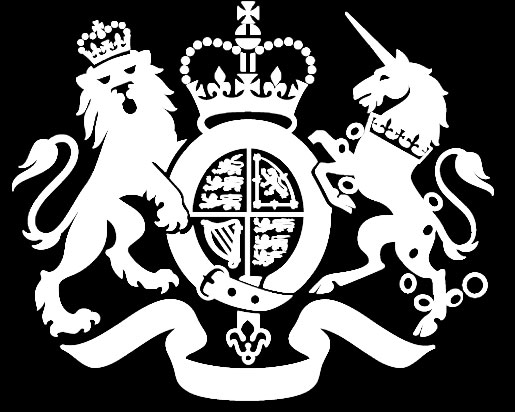Moving over from classic SharePoint to modern SharePoint is not always straightforward. Not only can it feel like a new platform and interface to get used to, but then you have the issue of managing your legacy classic environment with your modern sites too.
Managing two systems is complicated in itself but additional questions arise. How do you move forward with a consistent user experience across your SharePoint landscape? What do you do when you want people to adopt modern sites, but a team wants to introduce a classic site, because thats what they’re used to? You may also have an older intranet that can only cope with classic SharePoint.
These issues can sometimes even cause teams to postpone moving over to modern. In this article were going to see how a new SharePoint intranet can act as a bridge between classic and modern SharePoint and help teams with an over-reliance on classic SharePoint move forward with modern sites.
We still love modern
One of the best things about the recent evolution of SharePoint is the development of the modern experience and all the benefits it has brought to intranets and digital workplaces. Modern has delivered better interfaces, better performance, better support for publishers, better self-sufficiency, better site templates, better web parts and more. In 2018 we wrote about eight things we love about SharePoint modern pages.
As Microsoft continues to invest in modern and roll out additional features, we continue to enjoy working with it, both in our role as geeky developers and as intranet and SharePoint consultants, helping our customers launch fantastic intranets and digital workplaces.
Starting with SharePoint from scratch? Use modern!
Naturally anybody starting out on building a new intranet that is based on SharePoint Online and starting from scratch will be utilising the modern experience. The same now goes for on-premises customers where SharePoint 2019 (which has been playing catch-up to a certain extent) can now also fully utilise the modern experience.
Weve launched both custom and Wizdom intranets that are mainly powered by modern SharePoint. Wizdoms in-a-box intranet was originally designed to work with classic SharePoint and has also now been extended to work along with modern SharePoint. Wizdoms developers have been working away since 2018 to make sure that each part of Wizdoms intranet and digital workplace offering plays nicely with all of modern SharePoint.
Recently we have been working on a brand new global intranet for TTEC, a global provider of customer experience solutions. Because the client wasnt working with existing classic SharePoint sites, we were able to only utilise modern web parts on a Wizdom intranet to deliver the very best experience possible for TTECs mobile and remote workforce.
Mixing classic and modern SharePoint
However, many organisations who are looking to design a new intranet or digital workplace environment may already have classic SharePoint in place or even a mixture of classic and modern SharePoint in place. This is particularly the case with organisations that have:
- a custom-designed intranet that is based on classic SharePoint, so lists and sites and pages need to stay classic
- worked with a previous SharePoint intranet based on classic and are looking to upgrade, but have already started to experiment with modern too. For example, perhaps a particular function has used a communication site and this has now spread to other parts of the business.
- where a company has been brought together by acquisition and there are different versions of SharePoint being used
- where there has been little to no governance and the SharePoint landscape is a digital wild west.
A SharePoint intranet as the unifying experience layer
In these types of situation, a new SharePoint intranet can actually act as an excellent unifying experience layer that can bridge the gap between classic and modern SharePoint, incorporating both within one common experience for users. Depending on the situation, this new intranet could be a Wizdom intranet or a custom-build.
For example, Content Formula worked on improving the intranet for Petrofac, a global provider of oilfield services to the oil and gas industry with nearly 11,500 employees worldwide. Our work focused on building a new homepage experience. Despite the old intranet, Petronet, being based on classic SharePoint, our custom template for the homepage incorporated modern web parts. We also delivered other templates that led to a far more engaging, visually appealing and ultimately vibrant intranet.
When organisations do have a SharePoint environment where there is a mixture of classic and modern, the intranet helps your users:
- deliver a great user experience for content, protecting users from the more dated and less friendly classic experience that tends to be the driver of negative opinion about SharePoint
- bring the worlds of classic and modern SharePoint together so there is a more consistent and less confusing experience for all.
It also helps digital workplace teams too by:
- allowing hesitant teams to finally get started with modern, because they previously wanted to avoid a mixture of classic and modern
- aligning your SharePoint intranet with the Office 365 or SharePoint roadmap by starting to use modern sites and web parts, allowing for a more sustainable intranet with less retro moves of introducing more classic SharePoint
- allowing teams to move forward with modern in a more achievable and gradual way, without having to migrate or upgrade everything over to modern all at once.
Moving forward with modern!
If youre stuck with a legacy intranet based on classic SharePoint, have a sprawling mixed landscape of modern and classic or are holding back on kick-starting modern SharePoint, then a new intranet can really help. Weve delivered both custom intranet with Sharepoint and Wizdom by LiveTiles intranets that unite modern and classic and end up being loved by the users and the teams that run the intranet! If youd like to discuss any aspect of modern SharePoint and moving on from classic, then get in touch.

